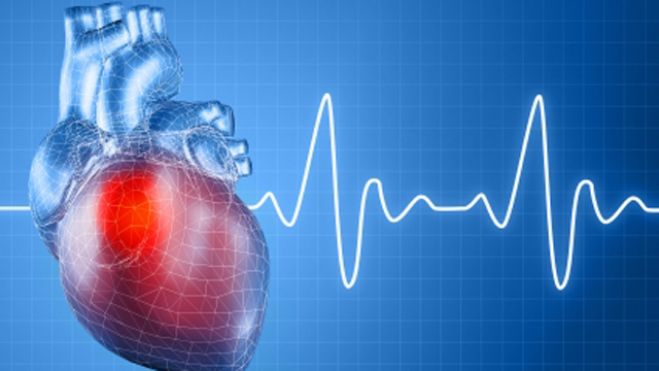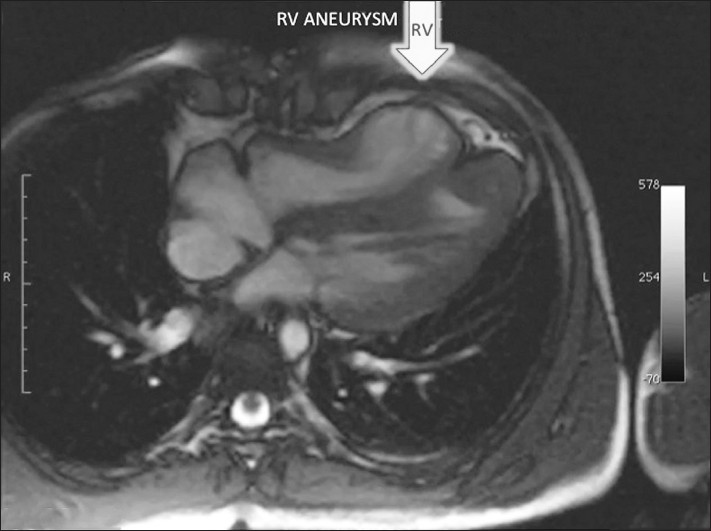Category Archives: Prevention & Alternatives
Today’s Health Watch: High-Salt Diet Puts Diabetics at Risk
It’s not only sugar that raises alarms for people with diabetes. Eating a high-salt diet may double the risk of developing heart disease in people with diabetes, according to a new study from Japan. READ MORE
Today’s Health Watch: Vitamin D levels
Everyday Health conducted an international study of eight populations from Europe and the United States to investigate the association of level of vitamin D in blood and deaths from all-causes, cardiovascular diseases, and cancer mortality, published in the British Medical Journal in June 2014. READ MORE
Father’s Day Health Watch: For Father’s Day, Share These Healthy Tips With Dad
Want to give your Dad something special for Father’s Day? Stealthily share some of these tips for healthy summer living with him. READ MORE
Father’s Day Health Watch: Bad News for BBQ: Hot Dogs May Raise Heart Disease Risk
Just in time for those Father’s Day cookouts, researchers have released a study linking serious disease risk with processed meats. Remember, the way to Dad’s heart is through his stomach – try the tomato salad instead of the baloney-salami sub. READ MORE
Screenings Held in Waldwick Boy’s Memory Detect Heart Issues in 14 Bergen County Youths, Northjersey.com, 24 March 2014
10 Steps to Protect Against Hypertrophic Cardiomyopathy
Click on Image for FoxNews.com Posting
Published February 11, 2013
FoxNews.com
As if it were yesterday, I recall the death of 18-year-old Ben Breedlove, who suffered from hypertrophic cardiomyopathy (HCM), an ailment in which I specialize as a pediatric cardiologist.
I have seen it rob too many young people unnecessarily of a long and fulfilling life.
Here are 10 steps to protect your children, family members and anyone you love against the ravages of hypertrophic cardiomyopathy:
1. Remember that statistically if one member of your family has been diagnosed with HCM, then one-half of your family members are at risk for developing this disease. Evaluation of first-degree relatives on a regular, repetitive basis can go a long way towards correct diagnosis and effective treatment. It is imperative to extend this medical information to as many relatives as possible. Try to make the effort to contact others, even if you are estranged from them. Remember to breed love.
2. Always remember that hypertrophic cardiomyopathy is a sneaky disease: It is many times missed or misdiagnosed. Common diseases that are confused with HCM are asthma, mitral valve prolapse, anxiety, coronary artery disease and an athletic heart.
3. Be aware of symptoms that require prompt medical attention:
• Chest pain with exercise or simple activities such as walking.
• Passing out is a very important symptom that requires prompt medical attention.
• Shortness of breath, lightheadedness, and extreme tiredness are other symptoms of HCM.
4. Avoid circumstances that increase your risk:
• Avoid hot weather and dehydration.
• Be aware of the need for vigorous fluid resuscitation during infections or gastroenteritis or exercise.
• Avoid burst of activity.
• Avoid isometric activity.
5. With hypertrophic cardiomyopathy in humans, the lining of the blood vessels in the heart tends to be affected. Unfortunately, this is not just limited to the heart, but also involves the blood vessels networked to other organs throughout the body:
• Foods that improve the lining of your blood vessel include nuts, seeds, dark chocolate, fruits and vegetables.
• Prolonged periods of walking help revitalize the lining of your blood vessels.
• Foods that decrease the function of the lining of blood vessels include sugary drinks (soda), high salt, high fat, high sugar, high fructose corn syrup, and even high protein. Life is about balance and a balanced diet.
6. Beware of diseases or circumstances that can worsen hypertrophic cardiomyopathy, or cause it to progress faster:
• Sleep apnea, diabetes, obesity, hypertension, rapid weight gain and hypercholesterolemia.
• Steroids, including drugs like prednisone, anabolic steroids, and testosterone can aggravate the condition. The use of growth hormones or supplements that increase growth hormone or testosterone levels may also accelerate HCM.
7. Avoid drugs that can increase your risk of having a bad event:
• Avoid stimulants and decongestants.
• Avoid alcohol consumption as its diuretic effect can lead to decreased blood volume.
• If you are on a blood-thinner (e.g., Coumadin), remember to have your blood checked monthly.
• For any abrupt new onset of neurologic symptoms, such as muscle weakness, severe headache, or change in vision, seek prompt, urgent medical attention.
8. Once diagnosed with HCM, you are restricted from competitive sports and extremes of exercise, such as avoiding heavy lifting.
9. If you are on a beta blocker for HCM, it is imperative that it is taken daily. Missing a dose results in a rebound effect that can make your heart rate increase and put you at an increased risk.
10. Enjoy life, keep active and eat healthy. Most people with HCM have a normal life expectancy.
Dr. Robert J. Tozzi is Chief of Pediatric Cardiology and the Founding Medical Director of The Gregory M. Hirsch Hypertrophic Cardiomyopathy Center at the Hackensack University Medical Center in New Jersey. He is the co-author of several papers published in refereed research journals, and he has lectured extensively in his field at numerous professional conferences. To learn more, visit his website at DRTOZ.com.
Read more: http://www.foxnews.com/health/2013/02/08/10-steps-to-protect-against-hypertrophic-cardiomyopathy/#ixzz2KheuMOYG
Hypertrophic Cardiomyopathy in a Young Adult with RV Aneurysm: Report of a Rare Finding and Review of the Literature
New Guidelines for Fighting Obesity and Heart Disease in Children
There are new recommendations on cholesterol screening, and much more, just issued by the National Heart, Lung and Blood Institute (NHLBI). Their mission is clear from the document’s title: “Cardiovascular Risk Reduction in Children and Adolescents: The New NHLBI Guideline.”
mission is clear from the document’s title: “Cardiovascular Risk Reduction in Children and Adolescents: The New NHLBI Guideline.”
The document is in direct response to the alarming proportion of children who have markedly abnormal cholesterol levels and evidence of atherosclerosis – a disease normally thought of as an adult medical problem. These recommendations are designed to help reverse the epidemic of obesity and the related diseases that are growing at an alarming rate in our children.
At the November 2011 American Heart Association Convention in Orlando, as I observed the NHLBI presentation about these new and much-anticipated recommendations for preventing heart disease in children, I looked around at the sparsely-filled room. It was set up with seats to accommodate 600 professionals. There were fewer than 200 in attendance. Perhaps this was because it was an evening presentation, or maybe it reflects physician frustration at the enormity of the public-health issue of obesity, with its secondary problems of hypertension, hypercholesterolemia and resultant heart disease.
In any case, the guideline document needs to be widely disseminated within the medical community.
The comprehensive NHLBI review began with a computer-generated initial list of 1 million articles. The final document incorporated the best-of-the-best research on the topic, representing a derived-consensus document.
These are the significant take-away points:
- High cholesterol in children is related to the development of heart disease in the adult.
- With the obesity epidemic, cholesterol levels are rising even higher. Reduction in obesity will lower cholesterol levels.
- Early intervention is needed for hypercholesterolemia and poor health habits in children (the behaviors as well as the diseases continue into adulthood).
Initial management for abnormal serum cholesterol is education about healthy diet and exercise. - Healthy diet-education is best handled with the entire family involved and a dietitian.
- Examples of healthy diet include the DASH diet and the Mediterranean diet.
- There should be universal screening for elevated cholesterol for ages 9-11 years.
- There should be earlier screening for high-risk individuals.
- Medications may be needed in about 1percent of children (upwards of 200,000 children).
- Parents must increase the activity level of children and reduce TV and computer time. The recommended activity level for 5 years and older is one hour of moderate to vigorous exercise per day.
Quite simply, this list should be posted in every pediatric physician’s office across the United States.
Video: The Watanabe Rabbits
A Vicious Cycle of Subsidized Diet and Disability
Where do your tax dollars go?
 It is a medical fact that soda and sugary drinks contribute to our nation’s rampant obesity problem. According to a 2010 report in The American Journal of Public Health, the federal government’s Food Stamps program allows an estimated $4 billion per year to be used to help fuel the obesity epidemic by paying for these high-calorie, obesogenic drinks. So every year, our tax payments are used to fund this unhealthy dietary practice, fostering a national health crisis.
It is a medical fact that soda and sugary drinks contribute to our nation’s rampant obesity problem. According to a 2010 report in The American Journal of Public Health, the federal government’s Food Stamps program allows an estimated $4 billion per year to be used to help fuel the obesity epidemic by paying for these high-calorie, obesogenic drinks. So every year, our tax payments are used to fund this unhealthy dietary practice, fostering a national health crisis.
Not only are we paying for consumption of these drinks, but we must also subsidize the health care costs that are related to obesity, hypertension, diabetes, and joint-replacements, as well as for scooters that allow these overweight and disabled individuals to have some freedom of movement.
Our tax dollars that are used to pay for these unhealthy products make their way back to the companies that produce these products. Those tax dollars can then be recycled to pay for the advertising that helps fuel our children’s’ consumption of products that promote obesity, sickness and dependence on the subsidized healthcare.
It is a vicious cycle that requires vigorous action at the medical, educational and regulatory levels.
As a wise commentator said, when you subsidize a certain kind of behavior, you get more of it.
As with too many generic crises, unfortunately, we can thank the logic of subsidies and entitlements for the perpetuation of an entirely avoidable and worsening behavior-related health disaster.
Are Your Supplements Killing You?
Certain benefits that have been widely publicized for many years regarding dietary supplements may be ill-advised at best, according to a recent study in the Archives of Internal Medicine.
Indeed, one might almost say that confusion abounds. This new study on women’s health reports that dietary supplements are resulting in a higher mortality rate for women. But before we start to panic, let’s look at a few facts.
1) This study was conducted on older women with a mean age of 61 years.
2) Those taking iron supplements showed the greatest risk of earlier mortality.
Excess iron in the bloodstream is associated with increased atherosclerosis and subsequent heart attacks and strokes. It acts as a catalyst that increases the risk of free radical damage to the vascular system and associated tissue, thereby accelerating the aging process.
But back to the study.
When attempting to analyze this study, the most important piece of information is that these women are in a post-menopausal group that would no longer need to take extra iron to maintain health. After loss of menses, the risk of iron-deficiency anemia is low, and the risk of over accumulation increases.
Of course, most women who are trying to stay healthy are probably getting enough iron from fortified foods and dark green vegetables, as well as the occasional intake of red meat.
So here’s the bottom line: Iron supplementation is needed for the iron-deficient person. This is much more common in younger women, especially those who experience a heavy menstrual flow each month.
So, my recommendation for older men and women is to be smart, have blood work to check your iron status. Unless you receive a doctor’s indication that you are iron deficient, it’s best to skip that vitamin that contains iron.
Vitamins, Vitamins – Everywhere!
Food for Thought…
Vitamins, vitamins, everywhere! Given the excess availability of vitamins as supplements and as dietary fortification in a vast number of foods, is it possible that we are poisoning ourselves with excessive intake of vitamins?
A vitamin, by its very definition, is needed in our bodies in minute quantities. So why are vitamins added to so many of our daily foods?
The food industry has added vitamins and minerals to a broad spectrum of our foods to make up for the damage (i.e., the stripping of nutrients) that occurs in the sometimes radical processing of foodstuffs. In addition, “vitamin fortification” has been used as a marketing ploy to give essentially bad or empty-calorie foods the illusion of being healthy for the consumer. To make things even worse, the vitamin hype feeds into the psychological trap that lures the consumer into thinking, “if a little is good for you, then more must be even better!” Now evidence is growing that too much supplementation may increase one’s chance of aging faster and dying earlier, according to a recent study released in the Archives of Internal Medicine.
Read more: http://www.foxnews.com/health/2011/10/14/are-your-supplements-killing/#ixzz1boqyTbYM
But back to the ploy of “fortifying foods with vitamins and minerals,” which, since the hugely successful marketing campaigns of the 1960s aimed at the parents of growing Baby Boomers, has become universal and excessive.
Cereals and food bars with more than 100 percent of your daily needs are now quite common. When I look at the ingredient list on the label of one of these products, I have to question whether one is about to consume some form of cereal, or Pop Tarts, or simply a large multivitamin.
In my last article, I pointed out the problems of multivitamin consumption in the diets of our older population. If our food industry continues to manipulate the vitamin and mineral content of the foods we eat, in the sometimes dramatic fashion I have described, we will begin to see the same negative effects of excessive fortification, such as too much iron and calcium, in the general-population’s diet as we now see resulting from over-supplementation in the diets of our older consumers.
- Studies have revealed that supplementing vitamins A, E, and C as well as Omega 3 does not yield the same benefits that are obtained when they are consumed in natural sources. Now more evidence of the toxic effects of excessive supplement and vitamin consumption, coupled with scarce documentation to support such large intake, makes the case that not only is natural better, but modified or fortified may be bad. Fortunately, the health benefits are dramatic when vitamins and supplements are obtained in a natural state.
Following are some examples of this.
- The Mediterranean Diet
- Nuts
- Vegetables (dark green veggies are the anti- obesity, anti-diabetes, anti-hypertension and anti-ADHD natural food)








